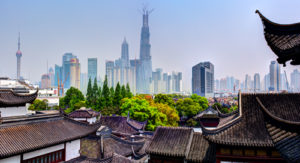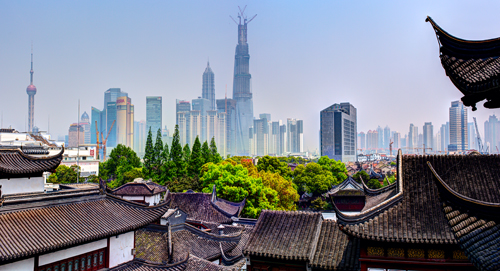Its economic prowess aside, Shanghai is also a powerhouse in tourism, tapping its unique blend of western and oriental influences, old and new to pull in visitor numbers. Prudence Lui takes a look at what makes tourism tick in this megacity

Shanghai’s history may be short vis-à-vis the storied cities of China, but this cosmopolitan city, often dubbed the Paris of the East, and its contrasting blend of old and new, openess, and mix of cultures is often what travel experts find most compelling in its attraction to international visitors.
It is a dynamic city whose tourism scene is constantly brimming with new attractions. The latest additions include Shanghai Disneyland last year; the 632m Shanghai Tower, which launched in January as the world’s second tallest building; and the soon-to-complete Shanghai Haichang Polar Ocean Park.
The Shanghai government is also keen to positon the city as an international destination and has laid out plans for new tourist areas, which include the creation of six national-level tourism areas centred around Sheshan, Dianshan Lake, the Bund and the Dongtan Wetland Park by 2020.
The new attractions notwithstanding, it is still Shanghai’s blend of heritage and modernity that tour operators often look to for inspiration in their creation of novel experiences and packages.
Faces of China, CEO, Cindy Zhang perceives Shanghai as a gateway city that leverages her recent history well. She said: “Shanghai’s rich history over the past 100 years can be seen in many buildings from the Art Deco period. We have Shanghai Museum, one of the best in China, while the Kun Qu opera is an interesting programme to international audience. We have developed several exclusive private programmes led by experts like museum curators, expats and Chinese historians to offer cultural perspectives.”
Zhang added: “Shanghai has a lot more to offer than just the 1930s. Overall, it’s cosmopolitan with strong contrasts and diversity. It is a dynamic destination where changes are happening every day and always fun.”
Frank Gao, vice general manager of Shanghai branch at Century Holiday International Travel Group, shares a similar view and sees Shanghai as a mature destination in both its hard and soft aspects. Repeat visitors no longer opt for sightseeing tours but in-depth experiences, he noted.
“That’s why we offer insightful itineraries combining culture and local livelihood with authentic Shanghainese culinary experience at the Old City of Shanghai. By taking visitors to view architecture with centuries of history, they can immerse themselves and trace how people lived in the olden days,” he said.
Furthermore, for a city already known for its diverse dining options, the launch of the inaugural Michelin Guide Shanghai last year lent a further buzz to its dynamic, cosmopolitan dining scene.
A total of 35 stars were awarded to 26 restaurants in the city, with the T’ang Court of The Langham Hotel clinching the coveted three stars. A further 25 restaurants received the Bib Gourmand recommendation for offering good-value meals for under RMB200.
The guide’s international director, Michael Ellis, said: “The city is an economic and cultural crossroad, and its gastronomy is the result of a strong culinary heritage which makes the dining scene very exciting.”
According to Pudong Shangri-La, East Shanghai, area general manager, Mark Kirk, Shanghai’s allure as a modern city with heritage, multitude of experiences and attractions makes it more desirable. The addition of the Michelin Star Guide further propelled it into the limelight as an international dining destination.
Futhermore, general manager of Hilton Shanghai Hongqiao, Joseph Zitnik, noted: “Bringing back the image of romantic-old Shanghai paired with the new, vibrancy of our Michelin Star-rated restaurants, only adds to our city’s mystery and luster. The restaurants on the Michelin Star Guide were fully booked upon its release and this is a great lead-in for tourists and locals alike to try new restaurants, foods and experiences.”
Pacific World, destination manager of Shanghai, Violet Wang, commented: “It’s a plus as we can sell our destination by restaurants, food and wine. For programmes in Shanghai, we usually take clients into local outlets that serve traditional Shanghainese snacks or dim sum. With this culinary guide, we will produce a brand-new itinerary with Michelin dining in them.
“However, my concern is that these restaurants are small in size and ideal for group in 30-50 pax only. Therefore, they can’t accommodate big groups and could be very expensive.”




















